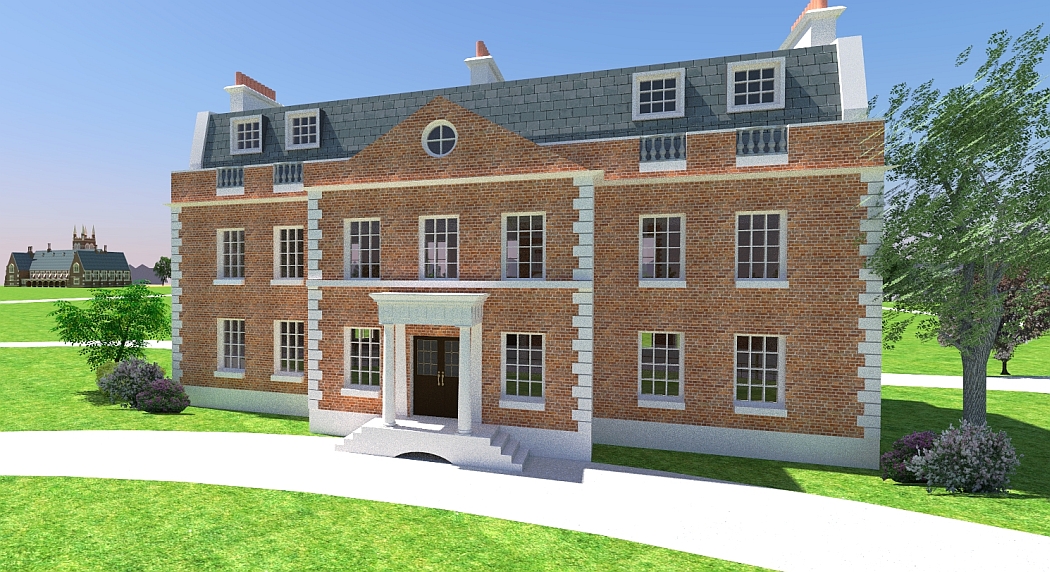 Wellesley House c1900
Wellesley House c1900
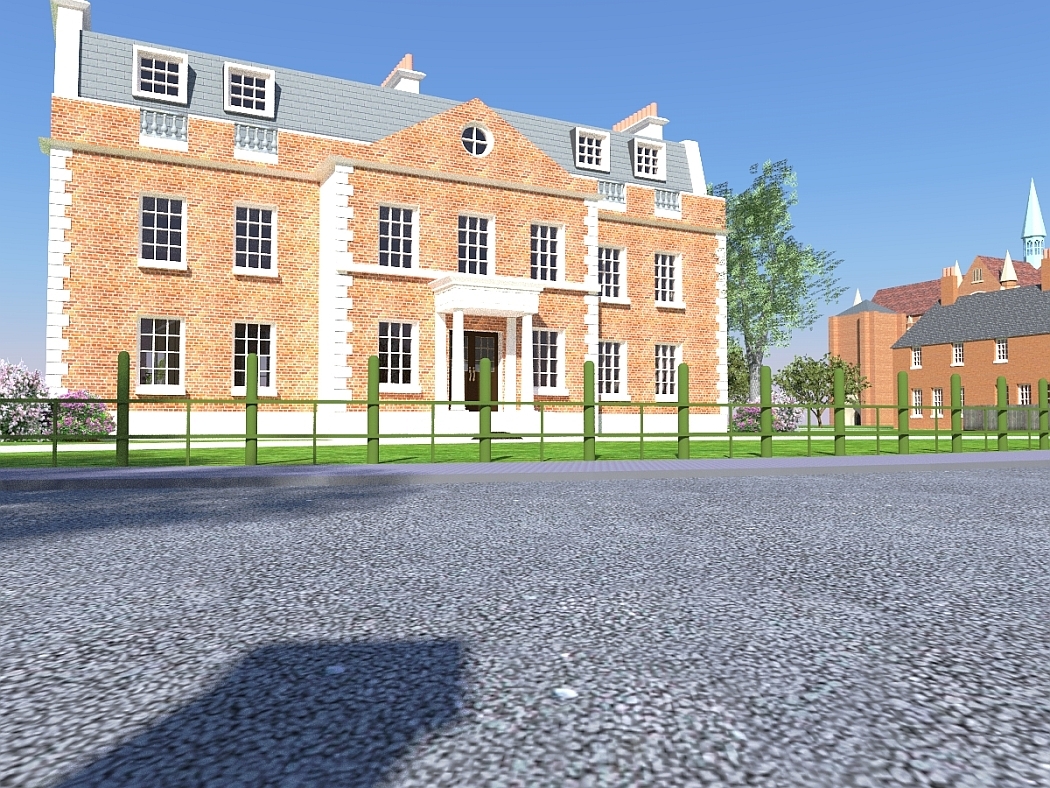 Wellesley House looking towards St Michael and All Angels
Wellesley House looking towards St Michael and All Angels
Recording Britain
Barbara Jones (1912-1978), a very highly regarded artist, painted Wellesley House in 1942 as part of the Recording Britain project. It was thought that many beautiful buildings might be destroyed during the war and that it was in the national interest to record these treasures before they were gone. They probably imagined that the main threat was the Luftwaffe. The real menace was closer to home. The council planning departments were a much greater danger to these buildings than anything the Luftwaffe could achieve.
I have hesitated to show the following picture because it probably doesn't do justice to a beautiful painting. I was only able to take a quick photo in difficult lighting conditions of a postcard of the painting. I've been unable to find any other pictures of the painting on the net. There is a link to some of Barbara Jones's other Recording Britain works below. Yet, although I have reservations, I still think it is important that a painting by an important artist of a beautiful house which no longer exists should be seen and not locked away in a cupboard.
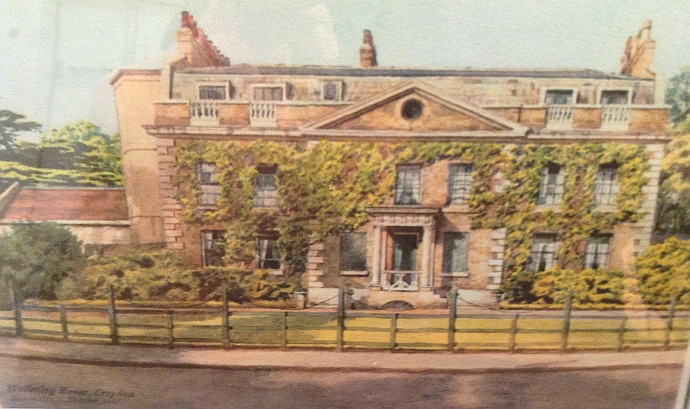 Photograph of postcard showing Wellesley House by Barbara Jones 1942
Photograph of postcard showing Wellesley House by Barbara Jones 1942Recording Britain works by Barbara Jones
Barbara Jones came from Croydon and she went to Croydon High School for Girls, which was across the road from Wellesley House. She would have looked at the house every day during her schooldays. The is a view of Wellesley House from one of the school buildings.
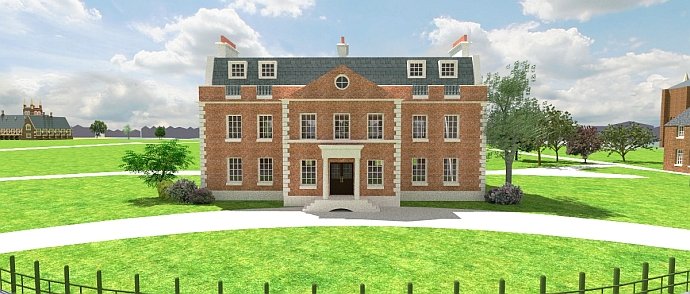 View of Wellesley House from Elm House
View of Wellesley House from Elm House
Some black and white photos
The next photo doesn't flatter Wellesley House. It was taken not long before it was demolished and I imagine at time the house had been occupied by people who didn't care about the place. Someone who just judged the house by this photo would probably say that it looks a wreck and we are better off without it. I sometimes feel that developers could justify any development by simply contrasting black and white photos of the old properties with colour photos of the new properties. It is the same thing that makes young people think the past was a dark and terribly drab place. But the sun shone just as brightly fifty or a hundred years ago as it does today.
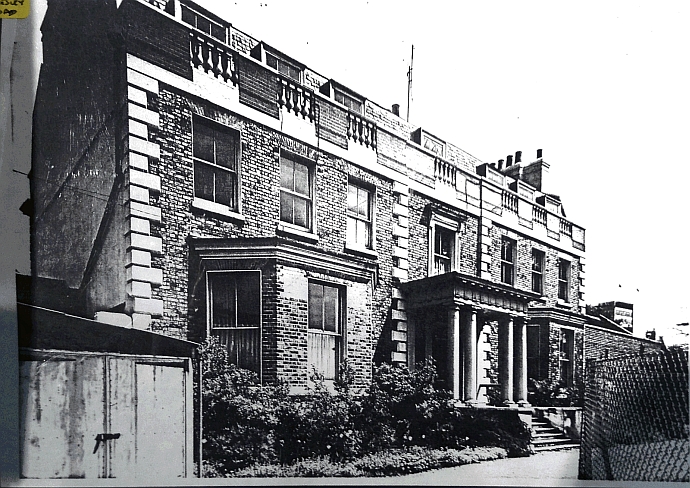 Rear view of Wellesley House 1960s
Rear view of Wellesley House 1960s
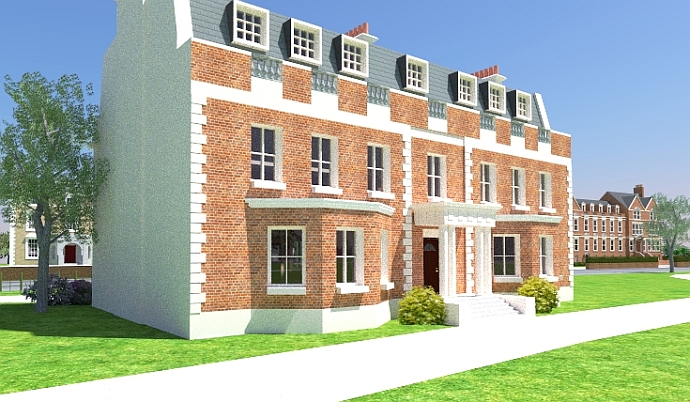 Same rear view of Wellesley House minus the ugly extensions
Same rear view of Wellesley House minus the ugly extensions
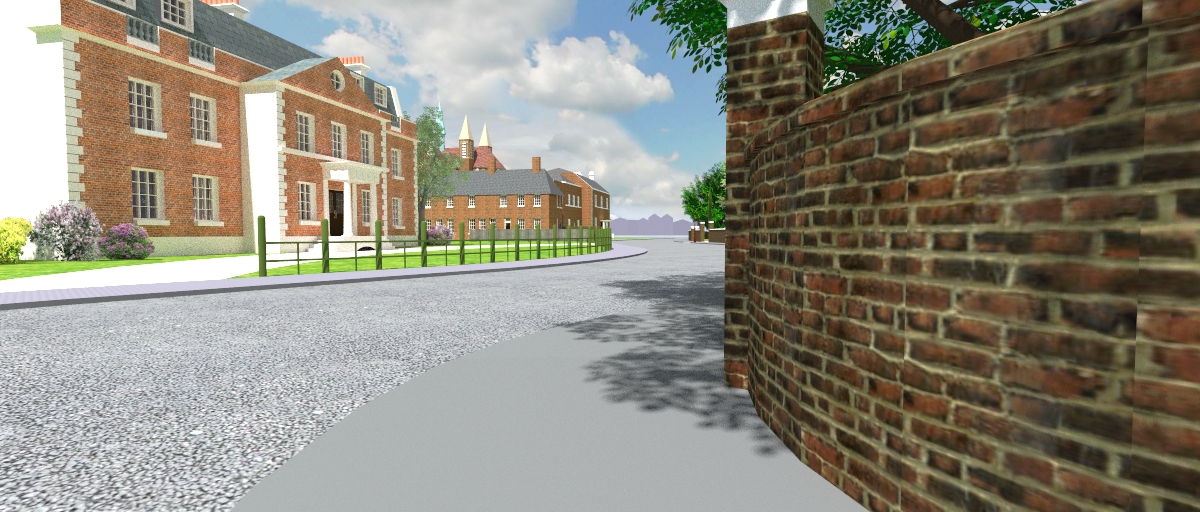 Wellesley House looking north
Wellesley House looking north
The photo below of the front of Wellesley House shows the building in a much better condition. In Barbara Jones's 1942 painting it looks as if the metal fence posts are still there. They would have been removed later in the war. Most of the metal collected ended up being dumped as waste. A similar thing happened with the wartime paper collections. Countless important historical documents were just destroyed on the whim of a few foolish civil servants and politicians.
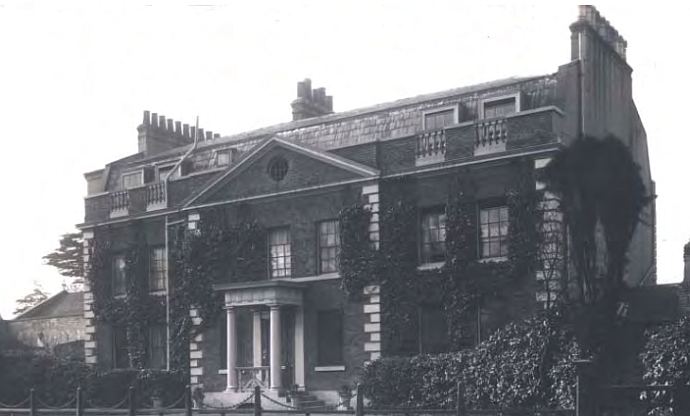 Front view of Wellesley House
Front view of Wellesley House
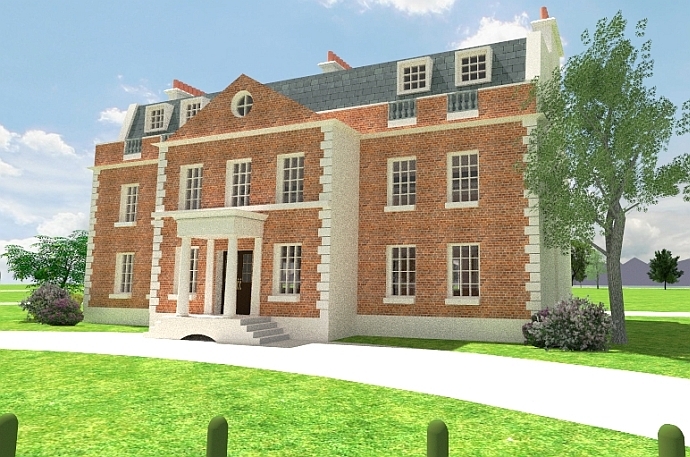 Same front view of Wellesley House without extensions
Same front view of Wellesley House without extensions
Views from the rear of Wellesley House
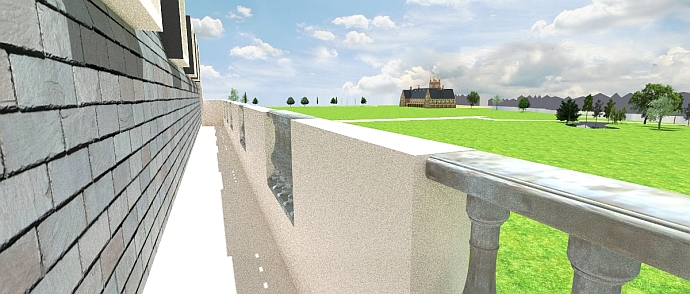 View towards Whitgift School from rear of Wellesley House c1900
View towards Whitgift School from rear of Wellesley House c1900
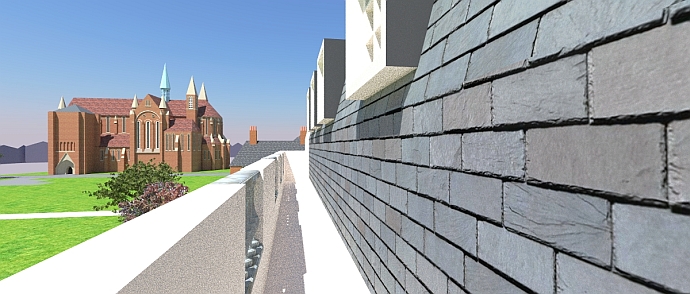 View towards St Michael and All Angels from rear of Wellesley House c1900
View towards St Michael and All Angels from rear of Wellesley House c1900
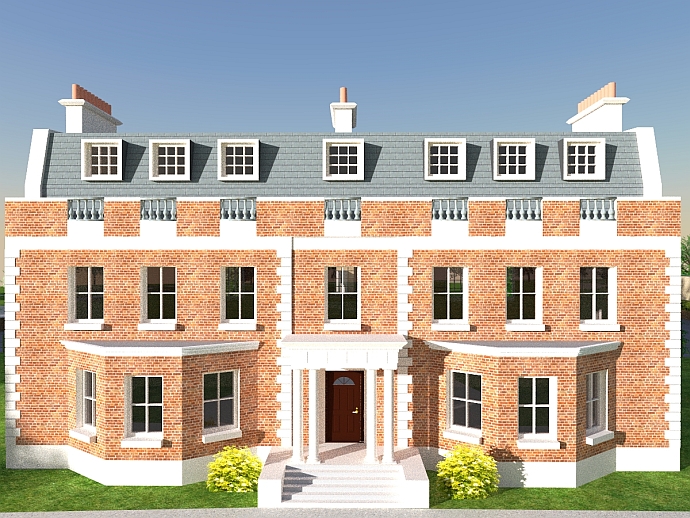 Wellesley House rear view
Wellesley House rear view
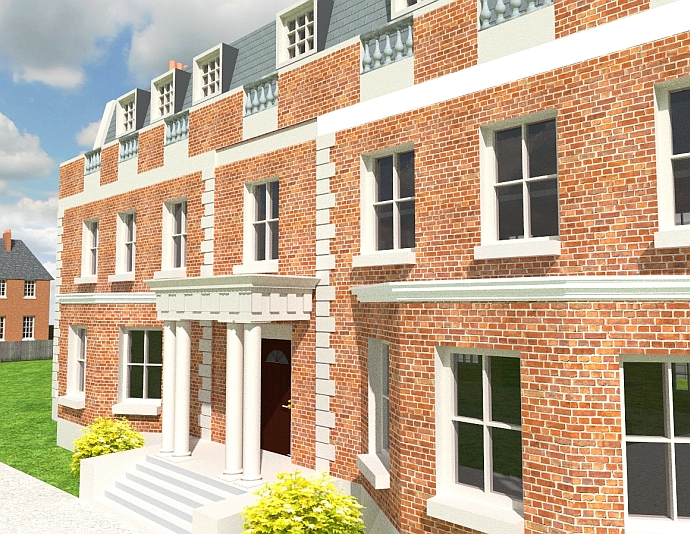 Wellesley House rear view
Wellesley House rear view
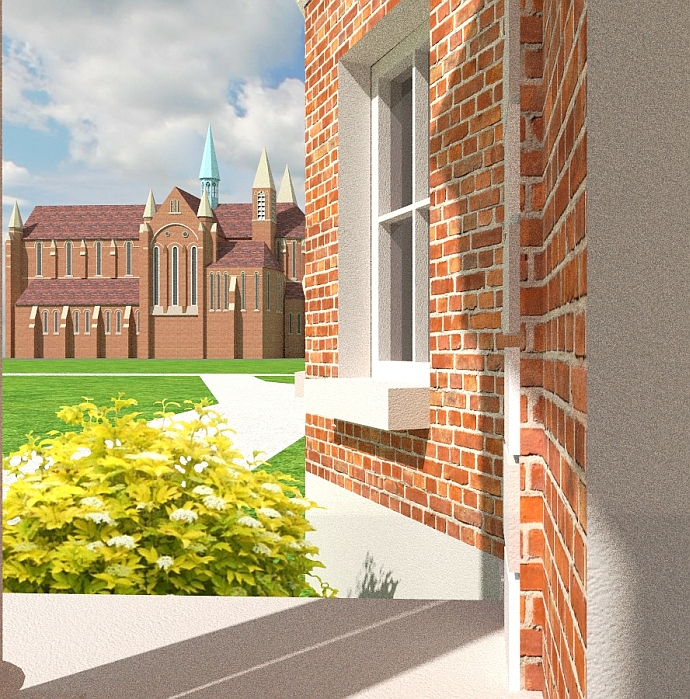 View from Wellesley House towards St Michaels before the new church entrance was built
View from Wellesley House towards St Michaels before the new church entrance was built
Inmates
The occupants of Wellesley House before Balfour were the Eastty family. Joseph Mortleman Eastty was a Deputy Lieutenant. This means he was some kind of ceremonial representative of the Queen. It probably involves wearing a silly hat, but apart from that I don't what Deputy Lieutenants do. He was also a magistrate. He died in 1878. Eastty's daughter Elizabeth married Sir Frederick Thomas Eldridge who lived across the road in The Elms. Eldridge was High Sheriff of Surrey. High Sherrifs used to hang thieves and traitors, but now, just at a time when the country needs ruthless officials like that, the role has been restricted to opening garden fetes.
For a number of years after Balfour fled to Argentina in 1892 the house was unoccupied. The 1901 census shows that the house was occupied by Thomas Shaxson, a banker, his wife, daughter and four domestic servants. By 1911 Wellesley House was being used as a women's hostel by the Girls Friendly Society. Ada Lanchester, 37, was the head. The household also included a matron, nine domestic servants and thirteen women aged between 18 and 48 who were described as inmates. About half of these so-called inmates were teachers. A map of Croydon c1960 shows that the house was still a women's hostel.
Jabez Balfour
Jabez Balfour, one time Mayor of Croydon, MP and fraudster, is now almost forgotten, but at the end of the 19th century his misdeeds were world news. Before his downfall he lived at Wellesley House.
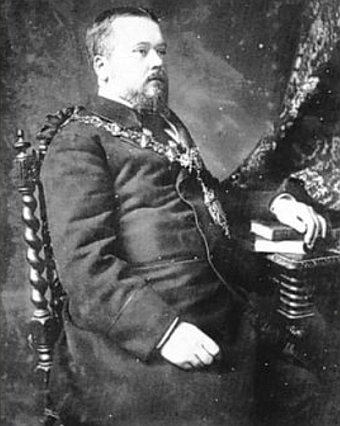 Jabez Balfour Mayor of Croydon 1883
Jabez Balfour Mayor of Croydon 1883
He was probably responsible for the extension to the left of the front of the house. When he moved to Burcot House, in Oxfordshire, he built an indoor tennis court on the side of that house. According to the Victoria History of the County of Oxford this destroyed "the symmetry and proportions of the structure." The Wellesley House extension might also have been a tennis court or a games room. (I have left extensions out of my models.)
Balfour's expressed his view on the visual amenity of buildings in his memoir My Prison Life (Chapman and Hall 1907) :
I pulled down ruthlessly the highly picturesque and frightfully unhealthy thatched cottages, replacing them by well-built, comfortable dwellings and I gave them good water, excellent sanitation and a garden of a quarter of an acre. I remember that an American lady, the wife of a highly-esteemed clergyman in the district, one day deplored the disappearance of the old buildings. I reminded her that cottages were primarily meant to be lived in, not to be looked at, and she reluctantly admitted, as I did myself, the wisdom of the change.
Balfour was writing about cottages in Burcot but I think he would have been just as unconcerned about adding an unsightly extension to Wellesley House.
After Balfour was exposed as a fraudster he went on the run to Argentina. According to his memoir an adviser in Argentina said he could avoid extradition by killing one of the locals. He would only serve five or six years in prison for the crime. By the time he was released, it was reasoned, the British Government would have forgotten about him. A gun and a suitable victim would be supplied for a thousand pounds. Balfour turned town the offer, but a man was killed during his recapture. The whole story is very well told in the book "Jabez The Rise and Fall of a Victorian Rogue" by David McKie and published by Atlantic Books in 2004.
An even more famous fraudster than Balfour had also lived on Wellesley Road. The Tichbourne Claimant, Arthur Orton, whose story is too well known to go into here, lived at 2 Wellesley Villas. A key point the trial came when a witness stated that the man she saw sitting at the window of 2 Wellesley Villas was Arthur Orton, an East London butcher, and not Roger Tichborne, the missing aristocrat. Although Tichbourne was sent to prison a few years before Balfour took over Wellesley House it quite possible that they would have met. Balfour was living at Thornton Heath not far from Wellesley Villas. The Prince of Wales Hotel, which shortly after became the Surrey Club, is also mentioned in the trial.
The following newspaper article gives a summary of Balfour's life.
Death of Jabez Balfour
Ashburton Guardian, NZ 25 July 1916

